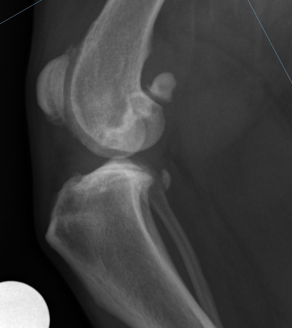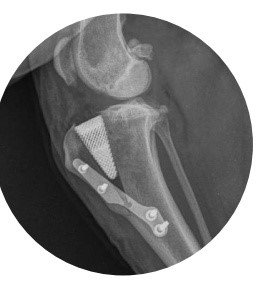
Both knees in the back legs can be affected. After the onset of lameness, arthritis and joint instability cause continuing deterioration in limb function. Thankfully, your vet can resolve the lameness and get your pet back to a happy, active lifestyle.

Surgery is performed to stabilise the joint and remove any injury to the cartilage cushion inside the joint, the meniscus. Without surgery, the joint can remain unstable, recovery can be slow and your pet may remain lame.

OssAbility Guided TTA is a surgical treatment your vet can tailor specifically to your pet. It is only performed by vets who are trained and confident in the procedure. TTA has been shown to provide a fast recovery to patients with cruciate disease.
The goal of a Tibial Tuberosity Advancement (or TTA) is to change the direction of the patellar tendon. The modified direction of the patellar tendon changes the biodynamics of the stifle and provides the stability that was lost by the rupture of the cranial cruciate ligament (equivalent to ACL rupture in humans).
Recovery is assisted by a rehabilitation programme, and return to full activity is expected in four to six months.
Written by Yvonne Marshall-Lee – Vetlife Oxford